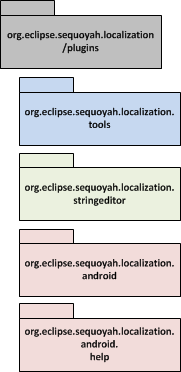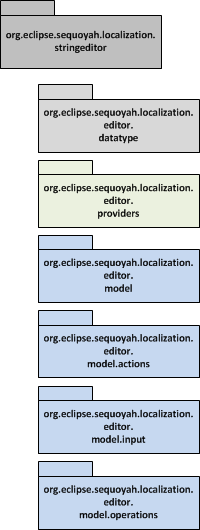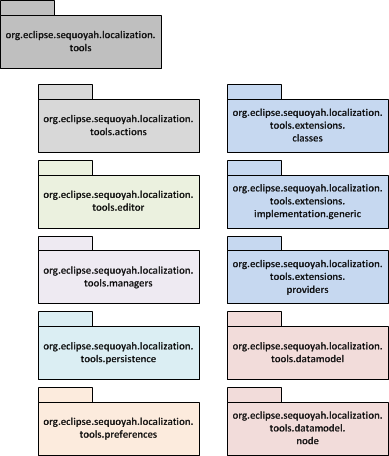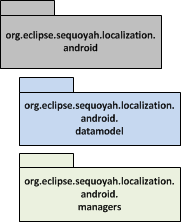Notice: this Wiki will be going read only early in 2024 and edits will no longer be possible. Please see: https://gitlab.eclipse.org/eclipsefdn/helpdesk/-/wikis/Wiki-shutdown-plan for the plan.
Sequoyah/LFE documentation
Overview
Plugins
org.eclipse.sequoyah.localization.stringeditor
This is the plug-in that implements the editor used by the LF.
org.eclipse.sequoyah.localization.editor.datatype
This package is responsible for dealing with data types. It's classes are:
- RowInfo
An object of this type is the root node of a linked list. It also has a string key and a list of RowInfoLeaf.
- RowInfoLeaf
An object of this type is a node on the linked list of a RowInfo. It has a HashMap of cells, which will contain the information, and a link to its parent and its position on the list.
- CellInfo
An object of this type is the representation of a cell of the editor. It has a string value, a string comment, its position, its dirty condition and a list of other cell infos. This list will be populated if the children are the node of an array, and the CellInfo itself will be the root of it.
- TranslationInfo
org.eclipse.sequoyah.localization.editor.model
It also has a package org.eclipse.sequoyah.localization.editor.model responsible for the editor model, and then deals with the UI part, cell editing and content providers.
org.eclipse.sequoyah.localization.editor.model.actions
Another package org.eclipse.sequoyah.localization.editor.model.actions deals with the actions available, such as adding and removing items or columns, translation actions and visualization. Also related to these actions there's a package org.eclipse.sequoyah.localization.editor.model.operations to deal with operations that use the actions (almost like a wrapper to the actions).
org.eclipse.sequoyah.localization.tools
This is the plug-in that holds utility methods.
It has a package org.eclipse.sequoyah.localization.tools.actions to deal with actions, like translation, search and grammar checking. It has a data model package org.eclipse.sequoyah.localization.tools.datamodel, that handles file types and locale info. Related to this package, there is a package org.eclipse.sequoyah.localization.tools.datamodel.node to handle the nodes for these file types.
There are three packages (org.eclipse.sequoyah.localization.tools.extensions.*) to deal with extensions: grammar checker, translations and localization schemas. They have interfaces, implementations and providers to those extension services.
Also there are packages to handle persistence (org.eclipse.sequoyah.localization.tools.persistence) and preferences (org.eclipse.sequoyah.localization.tools.preferences). There is one package (org.eclipse.sequoyah.localization.tools.managers) that deals with managers ranging from project issues to the extensions above mentioned.
org.eclipse.sequoyah.localization.android
This plug-in implements Android specific stuff.
It has an activator and specializes the LocalizationSchema and LocaleAttribute and also uses and XML Parser filter (for which purpose? which methods it provides?).
It has a package that contains specialized file types, and another one with specific managers for Android files and nodes and providers.(which?)




